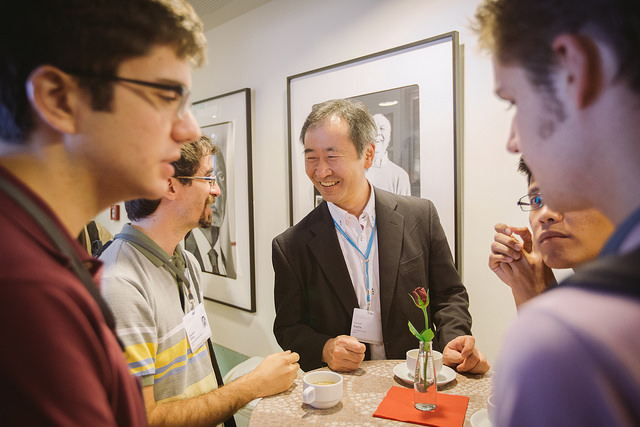In the footsteps of Nobel Laureates
UPM researcher Eduardo Oliva, at the Lindau Nobel Laureate Meeting. He is MSC fellows of the Instituto de Fusión Nuclear.
The Lindau Nobel Laureate Meetings began in 1951, as a way of reducing isolation of Deutsch scientists after World War II, and overcome barriers among states and minds.
From its origins, the Lindau Meetings have been the antithesis of isolation. Over the years, more than 430 Nobel Prize Winners have accepted the invitation to take part of these meetings, attended by nearly 35000 researchers under 35 from worldwide.
One of them is Eduardo Oliva, Marie Sklodowska-Curie fellow from Instituto de Fusión Nuclear Universidad Politécnica de Madrid (UPM). He has been one of the only 16 MSC fellows and one of the only 11 Spaniards to be selected by the Council to attend. Once every year, 30 to 40 Nobel Laureates convene at Lindau to meet the next generation of leading scientists: undergraduates, PhD students, and post-doc researchers from all over the world.

Eduardo Oliva studied physics at the Universidad Nacional de Educación a Distancia (UNED), as well as a double doctorate among the UPM (Science and Nuclear Technologie) and l’École Polytechnique (Physics) in France.
In Lindau, Oliva attended to exciting lectures given by Nobel Laureates in Physics, Chemistry and Medicine. The Lindau Nobel Laureate Meetings foster the exchange between scientists of different generations, cultures, and disciplines and thus, Eduardo could discuss a broad variety of topics with young researchers from all around the world and Nobel Laureates, like Roy Glauber (Physics 2003) and Steven Chu (Physics 1997, 12th US Secretary of Energy with the Obama administration).
Eduardo is a Post-doctoral fellow at the Instituto de Fusión Nuclear. His research work consists in modelling novel coherent sources of X-rays and their applications. The young research develops physical models and computer programs to study how to create and amplify coherent X-rays in plasmas.
These sources have multiple applications, like 3D imaging of proteins and viruses, probing the atmosphere for contaminants (by making the air lase) or improving current CT scan technology.


